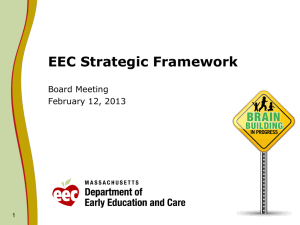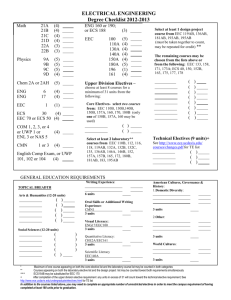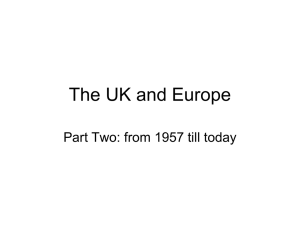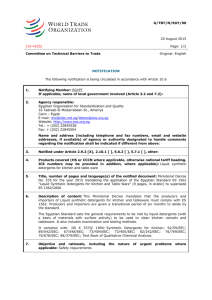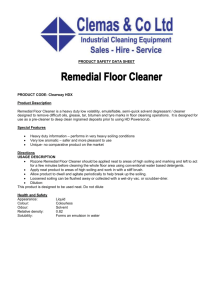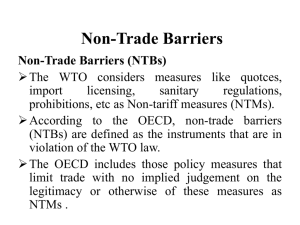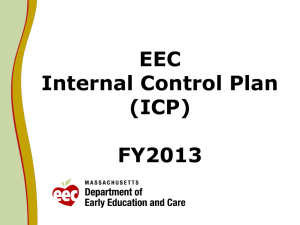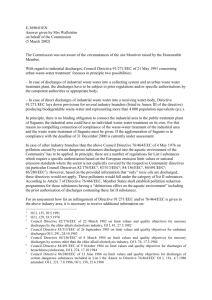PowerPoint Presentation - Single Market
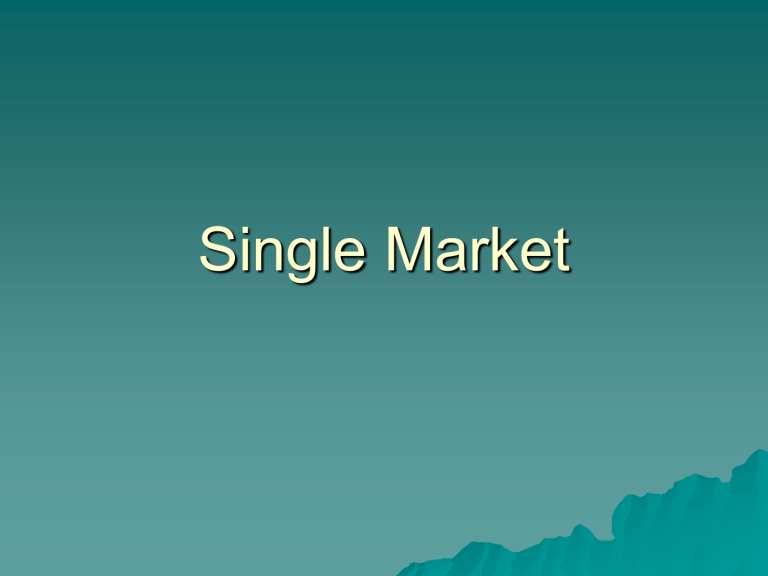
Single Market
Topics
What is the meaning?
How/why did it happen when it did?
Describe the main initiatives of SEA
Discuss the modalities of implementation
(instruments of implementation)
Analyze in some detail problem areas,etc
Related topics: cohesion, structural funds
Institutional aspects (QMV, the Court)
Informal effects: business firms
Major source for lecture
– Loukas Tsoukalis, The New European Economy Revisited
What is the meaning of
Single Market?
Non-tariff barriers (NTBs)
Concrete Measures (initially “300”)
Timelines for Implementation
New decision-making approach:
– Qualified majority voting in Council of Ministers
(QMV)
Related areas put on the agenda
– Health and safety at work
– Environmental policy
– Cohesion
Historical Context
Why did it happen when it did?
Economic conditions 1973-1984
– Worst (longest, deepest) postwar recession, related to 2 oil crises (1973,
1978-9)
– Unemployment plus inflation
– EEC performance worse than other major industrial areas (Japan, USA,
EFTA countries)
Historical Context
(cont’d-1)
– Signs:
Stagnation of intra-EEC trade
Decline in world share of manufactures exports
Falling behind in strong-demand sectors especially:
– Electrical and electronic equipment
– Office machinery
– Information technology (computers etc)
Historical Context
(cont’d-2)
Economic Policies 1973-1984
– Multiplication of protectionist barriers to trade through variety of “legal” means (NTBs)
– “National champions” as the favored approach to New Sector Initiatives (R&D, high technology, etc.)
– Divergent economies, especially in dealing with inflation
Monetary policy (interest rates and currency values)
Budget Policy (deficits)
Historical Context
(cont’d-3)
New Models/ New Thinking of 1980s
– Supply-side economics
– Deregulation
– In a nutshell: Thatcher and Reagan
Dramatic Failure of the Old Model
– Socialist/Keynesian Macroeconomic Expansion
1981-83
– In a nutshell: “The First” Mitterrand
– “The Second” Mitterrand (1983 on) as a turning point for EEC
Historical Context
(cont’d-4)
Constructive Initiatives of Business
– Cross-border collaboration in R&D (vs.
“national champions” approach)
– Concern about fragmentation of European markets (pro-forward movement of EEC)
– Round Table of European Industrialists
Led and first chaired by head of Volvo (from a then non-EC country)
– EEC crucial role in the process:
Etienne Davignon, Commissioner for Industrial Affaris since 1979 (DG 3), organizes sectoral “round tables”
Results: ESPRIT, RACE, BRITE, EUREKA
Historical Context
(cont’d-5)
Within the EEC: The problem
– Eurosclerosis: many ideas and proposals (especially Commission proposals) and little action
– Two huge barriers to forward movement
Community Agricultural Expenditures: need to reform CAP
Budget
– Inadequate “own resources”
– Excessive net contribution of Britain and Germany
Historical Context
(cont’d-6)
Within the EEC: Hope for Solution
– Temporary but significant resolution of the two barriers (1984 Fontainebleau Summit of
European Council)
– Margaret Thatcher changes her tune
Appointment of Lord Cockfield as Commissioner for
Internal Market affairs (1985)
– Jacques Delors as new president of the
Commission (Jan 1985 term begins)
Tour of the 12 capitals: the 4 options
Focus on Internal Market as single objective
Single European Act
Process:
– Jacques Delors’ Speech to European Parliament
(January 1985)
– White Paper “ Completing the Internal Market ” presented by Commission to European Council in Milan (June 1985)
Central role of Lord Cockfield in preparation of White
Paper
– Decision of Milan Council to convene
Intergovernmental Conference (IGC) on Treaty
Revisions
Majority decision accepted by the opposition (Britain,
Denmark, Greece)
Single European Act
(cont’d-1)
Process (cont’d)
– SEA signed (February 1986)
– SEA into effect (July 1987) following referenda in Denmark and Ireland
Provisions
– Removal of NTBs in 3 areas by 1993
– QMV for many measures
– Cooperation procedure with Parliament
– Court of First Instance established
– Recognition of domains needing special attention: health and safety, environment, cohesion
SEA Follow-Up
Unparalled unity of views and optimism about Europe
Dynamic economy, investment-led, leading to the impression of strong positive effects of Single Market
Special enthusiasm of business
– Pro-active role of “peak organizations”
– Lobby offices in Brussels
– Multinationals see opportunity
– Context of mergers and acquisitions (1988-90) with cross-border perspectives
SEA FollowUp (cont’d-1)
The Commission takes an ambitious and assertive role
– Delors II (1989 re-appointed president; second time since Walter Hallstein)
Key governments/key summits create framework for bold new steps
– Hannover summit (1988): Germany takes the lead to move forward
– Kohl-Mitterrand come together on political union and monetary union
SEA FollowUp (cont’d-2)
Two New IGCs (“Big Ones”) in 1990
– IGC on Monetary Union (EMU)
– IGC on Political Union (Institutional Reform and Other Areas than Economics)
Conclusion: SEA leads to integration initiatives on a broad front
– Single Currency
– Institutional Reform
– European Union
Implementing the Single Market
The “three areas” (official, specified in SEA)
– Physical barriers
Remaining frontier controls based on “rules of origin”
Frontier adjustments due to CAP border taxes (MCAs, or monetary compensatory amounts)
Transport restrictions due to national licensing and quotas for non-national carriers
Implementing (cont’d-1)
– Technical barriers (the “other” category)
Technical standards as indicator of product quality
Health and environmental standards
Discriminatory public purchasing: “national champions,” public procurement
State subsidies
Company law
Different regulatory frameworks for
“services”: insurance, financial services
Restrictions on capital movements
Implementing (cont’d-2)
– Technical barriers (cont’d)
Obstacles to free movement of labor
– Social security legislation and transferability of social benefits
– Professional qualifications (eg, architects, lawyers, doctors, accountants)
– University degrees
– Fiscal barriers
Different tax systems, taxable base, tax rates
Key issue of indirect taxes (value added tax)
Implementing (cont’d-3)
The “heart of the problem”
– European postwar tradition of “mixed economies” (lots of government intervention)
Centrality of regulatory frameworks
– The resort to NTBs as hidden form of protection in crisis periods
– The inherently complex world of technical standards, especially in high technology sectors
– Citizen concerns for quality living standards: consumer protection, environmental standards
Implementing (cont’d-4)
Solutions
– Strong reliance on “mutual recognition”
– Harmonization as a “last resort” or for the most intractable matters
– General rule of decision-making (several exceptions and “safeguards”)
QMV for physical and technical barriers
Unanimity for fiscal barriers
Implementing (cont’d-5)
– The special matter of technical regulations and standards (about 80% of all barriers, according to one estimate)
The “new approach” adopted by Council just prior to White Paper on Internal Market
(June 1985)
– Harmonization limited to safety matters
– Standards developed by private standards organizations on the European-wide level:
“European technical standards”
– Highly specific to products and sectors rather than general directives
Implementing (cont’d-6)
Results:
– By 1995, more than 5,000 European standards produced by private organizations such as CEN and CENELEC, as well as ETSI (European
Telecommunications Standards Institute)
– Membership of these standarization organizations consists of national standardization bodies of EU and EFTA countries
– Development of “a European doctrine in terms of product safety and the adoption of common
European standards” (Tsoukalis, p. 111)
– Long process
Implementing (cont’d-7)
The crucial importance of “mutual recognition”
– An action of the Court of Justice in the
Cassis de Dijon case of 1979
Principle: Whatever meets the technical standards and regulations of a member state must be accepted as doing so in any other state
Exceptions: Health and safety, restriction
“proportionate to objective”
Implementing (cont’d-8)
Some problems and delays
– Allowable “derogations”
– Reliance on directives for implementation
“implementation deficit” due to delays and
“complexities” of translating directives into national legislation
Public procurement, insurance, intellectual and industrial property, pharmaceuticals, veterinary and plant-health controls as the biggest “delayed” sectors
Sources
Internal Market
DGs
Bulletin
White Papers
Green Papers
